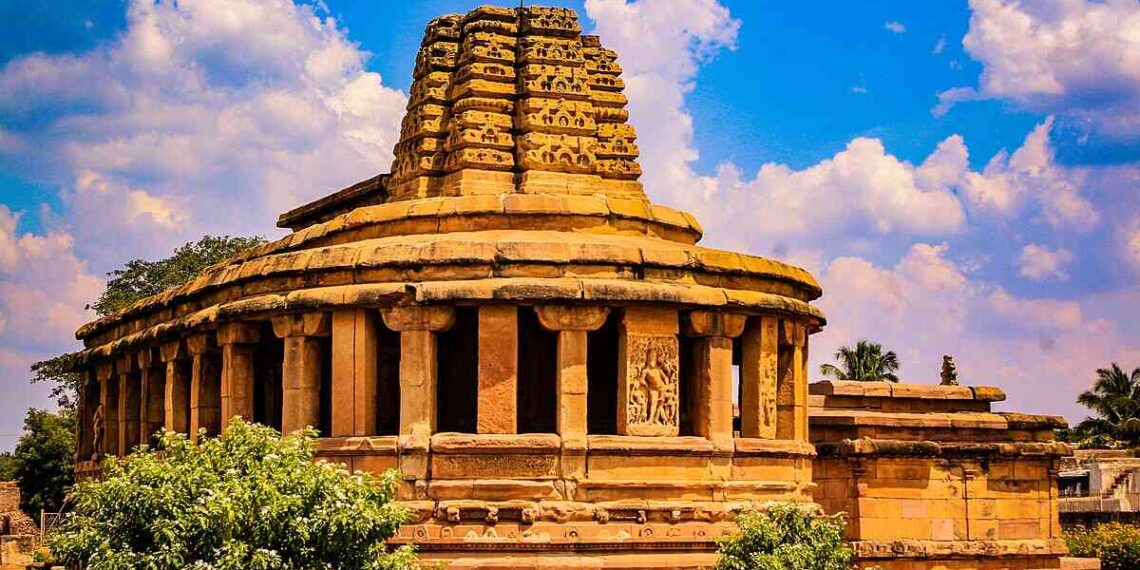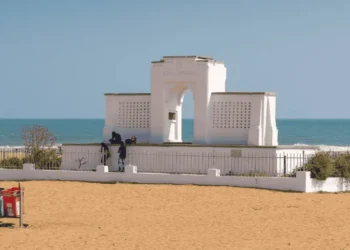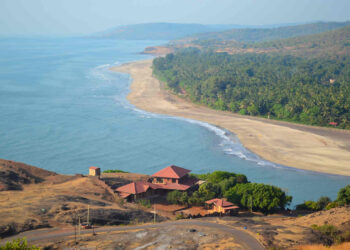The Durga Temple, located in Aihole, Karnataka, is a holy kshetra, originally dedicated to Lord Surya, the Sun god. This 7th-century shrine, situated on the banks of Malaprabha River, is a gem of Chalukya architecture. Covering about 2 acres, its unique apsidal design, detailed carvings, the temple is a part of UNESCO World Heritage Site
Legend of the Temple
The is more than one legend regarding the temple. One story ties it to Surya, the sun god, believed to bless devotees with health and vitality. The temple’s eastward orientation, catching the morning sun, supports this, as devotees think Surya’s rays purify the soul. Though named Durga, it’s not primarily for the goddess. The name of the temple comes from “Durgadagudi,” meaning “temple near the fort,” due to a lookout built atop it in the 13th century during wars.
Another tale speaks of the Chalukya king Pulakeshin II, who, after being inspired by a vision of Surya, ordered the temple’s construction around 700 CE. Artisans crafted it as a tribute to divine Sun god, with intricate carvings of gods, celestial dancers and gandarvas.
History of Durga Temple
The temple’s history dates to the late 7th or early 8th century. A 1970s inscription, translated by K.V. Ramesh, confirms it was built by Kumara for Surya, as Aditya. Aihole, a Chalukya capital, was a hub for temple constructions, and this temple, among 120 others, shows their skill. The Chalukya inscriptions and Vedic texts mark it as a key religious site.
The Chalukya kings, from the 6th to 8th centuries, were its main builders. Stone records show Pulakeshin II and Vikramaditya II (733–764 CE) giving resources for its upkeep. By the 7th century, it was a busy center, with artisans and traders supporting it, as village notes say. The Vijayanagara kings, from the 14th to 16th centuries, preserved it, though wars left some carvings damaged. The Marathas, in the 18th century, used it as a fort base, adding the “Durga” name.
In the 13th century, conflicts with Islamic Sultanates led to a fortified lookout on the temple, which lasted until the 19th century when British officer Briggs rediscovered it in the 1860s. Early scholars like James Fergusson mistook it for a Buddhist site due to its apsidal shape, but later studies confirmed its Hindu roots. The British managed it by 1856, and in 1947, Karnataka’s government took over, with the Archaeological Survey of India (ASI) now caring for it. The temple’s past lives in carvings and songs by saints like Basavanna, whose Saiva hymns echo Aihole’s devotion. Its role as a heritage site keeps it vital.
Architecture of the Temple
The Durga Temple is Chalukya style, covering 2 acres. Its apsidal plan, resembling a Buddhist chaitya hall, is rare detail in Hindu temples, with a curved sanctum end. Built on a high platform, it has a damaged curvilinear shikhara, once crowned by an amalaka stone. The pillared mandapa encircles the sanctum, forming a pradakshina patha for circumambulation, with carvings of Shiva, Vishnu, and Durga as Mahishasuramardini.
The outer walls have six devakoshtas (niches) with sculptures of Shiva with Nandi, Vishnu’s Narasimha and Varaha avatars, Harihara, and Durga slaying the Great demon, Mahisasura. Jalandharas (perforated windows) let in light. The entrance porch has pillars with amorous couples and mythical beasts, showing Chalukya artistry. The ceiling boasts a seven-headed serpent, and the adhisthana blends Nagara and Dravida styles. An ASI museum nearby holds artifacts, like a Lajja Gauri statue. The temple’s Gajaprashtha shape, like an elephant’s back, is also unique.
Festivals and Rituals
The temple after being destroyed in the invasion only retains it’s remains and is non-functional, with no active worship or festivals, as the main idol is missing. Still it remains a heritage site, open from 6 AM to 6 PM for visitors. In the past, rituals likely honored Surya with dawn offerings, as suggested by its design. Today, the Halebidu Utsav, held nearby in January, includes cultural events like dance, linking Aihole’s legacy to modern arts.
Cultural and Modern Importance
The temple is a big part of Karnataka’s culture. Its carvings inspired tales by local poets, shaping Chalukya-era art. The ASI maintains it, with an on-site museum showing Chalukya sculptures. Its apsidal design is said to have influenced India’s Parliament House. The temple’s riverside setting, near Pattadakal and Badami, ties it to Karnataka’s history as a temple-building hub.
Today, it attracts visitors globally—Aihole is 450 km from Bengaluru or 35 km from Badami, accessible by road. Pilgrims often visit Pattadakal’s temples (14 km away) or Badami’s caves, making it a broader trip. The temple connects Karnataka’s past to today, holding art and history. Stories of its fort days or Surya’s light live is still mentioned local lore.
Conclusion
The Durga Temple is an intricate part of Karnataka’s culture. Its legend of Surya’s grace, its history through Chalukya kings and wars, its unique architecture, and its role in Hindu heritage make it a legacy of ancestors. Old inscriptions and artisan tales started here, shaping India’s temple-building ways. The Durga Temple calls those drawn to history and art, thousands in number, from all over India and is one of the must visit places in Karnataka.











